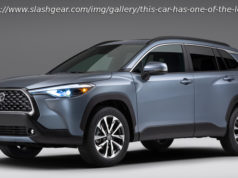 Jump straight to our full best power banks chart
Jump straight to our full best power banks chart
Phones get faster every year, but the more powerful they become the less their batteries can keep everything going. And, of course, all batteries will degrade over time. If you need extra battery power for your smartphone , tablet or other USB-powered device, you need a power bank. We’ve rounded up the 20 best portable chargers available in the UK in 2017. Also see: How to charge your smartphone or tablet faster
Depending on what features and capacity you need, a power bank can be anything from a few quid to close to £100. See our pick of the Best Power Bank Deals.
You might assume all power banks are much the same thing, but you would be wrong. You can get compact power banks that will charge your phone once, slightly larger portable chargers that might offer two or three charges, or high-capacity banks that can charge your phone in excess of 10 times!
Working out how many times a power bank will charge your phone depends on more than the mAh rating on the packaging. No power bank is 100 percent energy-efficient, with every portable charger losing power through voltage conversion and heat generated. The industry standard for energy efficiency is between 60- and 70 percent, and if it doesn’t expressly state otherwise on the packaging this is likely what you’ll get. But some of the best power banks can offer as high as 90 percent energy efficiency, which equates to more full charges for your phone.
Power banks can also vary greatly on their inputs and outputs. We’re seeing an increasing number of power banks with support for the latest Quick Charge 3.0 and USB-C standards, and in some cases these are supported on the input as well as the output, making them as fast to refill as they are to charge your phone. Some power banks may offer these in place of or alongside full-size USB, Micro-USB and even Lightning ports – which you choose entirely depends on which connection your phone uses, and for how long you intend to keep that phone until you upgrade. (Most power banks are guaranteed for 500 recharges.)
Typically you will need to carry a Micro-USB cable to charge your power bank, and potentially another cable for charging your phone if it doesn’t use the Micro-USB connection to charge. Some power banks come with carry cables to ease this requirement; others might feature built-in cables and Micro-USB- to Lightning adaptors so all you need throw in your bag is the power bank itself.
We’re starting to see power banks creep on to the market that feature an AC/DC outlet – a plug socket that allows you to plug in much more than USB devices. Unfortunately so far we’ve seen only power banks with the US two-pin plug, and needing to carry around a UK three-pin adaptor makes them less easily portable and feel less convenient.
Another type of power bank builds in solar panels. You might think living in the UK our grey climate would rule out the use of such a device, but even in cloudy conditions these devices can draw some solar power. However, the sunnier the conditions the better they work, so if this is the kind of device you’re after we’d recommend a model with a built in battery that means you will have power for your phone even when it’s dark outside.






